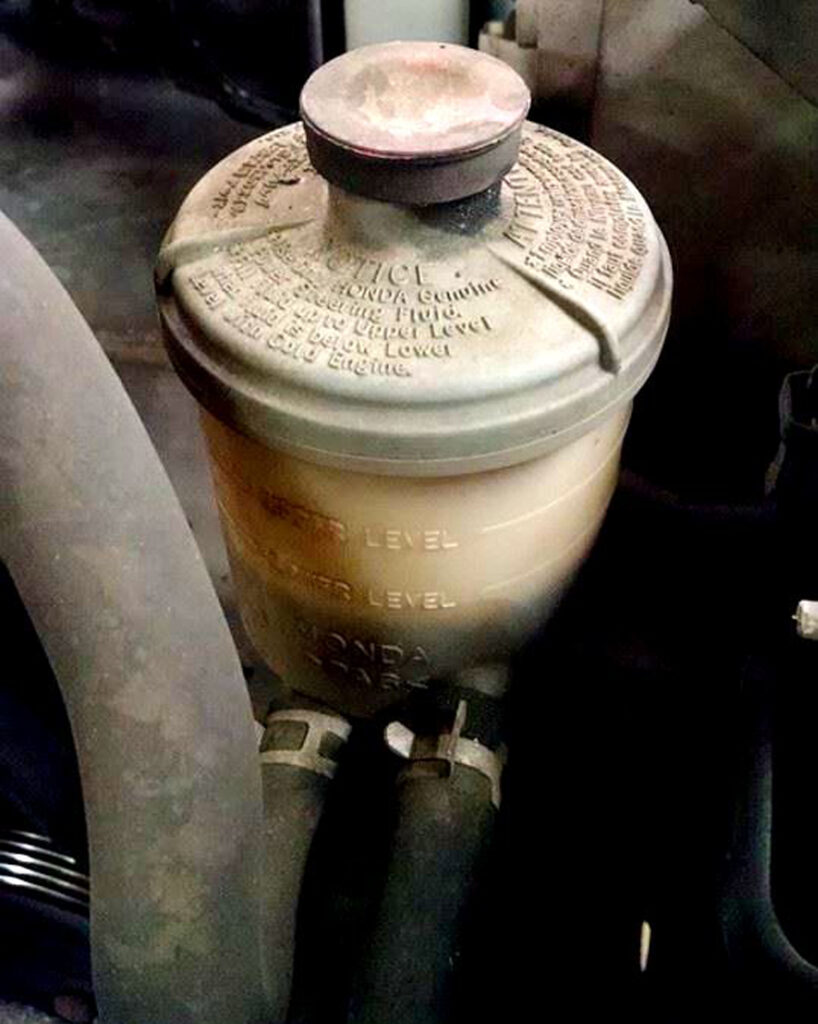A high-pressure power steering line delivers hydraulic fluid to the steering gear, making it easy for you to turn the steering wheel. If it’s damaged in any way, your vehicle’s entire power steering system is at risk. Because of this, it’s important to know when it’s time to buy a power steering line replacement.
What Is a Power Steering Line?
A power steering line, or power steering hose, is a vital component of your vehicle’s hydraulic power steering system. It delivers fluid to and from the power steering pump and gear, helping you turn your steering wheel with ease.
Because the pressurized fluid can exceed 1,500 psi, the high-pressure hose usually has several layers. Its inner layers are made of high-tech polymer materials that are resistant to high pressure, while the outer layer must endure heat and wear. Unfortunately, like other parts of your vehicle, these layers will degrade over time, and you might have to replace the hose with a new one.
You can learn more about the power steering line in our technical discussion about the pressure and return hoses.
When Should You Get a High-Pressure Power Steering Hose Replacement?
If you aren’t sure about replacing your high-pressure hose yet, there are some signs you can look out for:
Leaking Fluid
If you notice a puddle under your vehicle or fluid that is low in the reservoir, then it might be a leak coming from the high-pressure hose. A leak usually happens when the hose loses its flexibility. It crimps into a straight line, causing the hose to endure more stress until it tears. Instead of flowing to the steering pump, the hydraulic fluid is pumped out of the system.

Difficulty Turning The Steering Wheel
You might also hear a whining noise every time you try to turn the wheel because the pump has to compensate for the lack of fluid.
Physical Damage
If you notice any physical damage on the hose, it might be time for a replacement. Any tears or abrasions on the outer layer can mean that the inner layer has been exposed to heat and chemicals. Cracking and flaking on the outer layer can also be a sign that the internal layers are degrading and can no longer efficiently absorb the fluid’s pressure surges.
Hose Becoming Soft And Bulging
When inspecting your power steering system, be sure to look out for any bulges or soft areas on the high-pressure hose. A soft hose can be a sign of the internal or external layers degrading, while a bulge can mean that the fluid has gone in between the layers. Both are symptoms of the steering line breaking soon, so it’s best to replace it as soon as possible.

Can You Drive With a Broken Power Steering Line?
It isn’t a good idea to drive with a broken high-pressure hose. While a minor leak won’t stop your vehicle from running, it can lead to insufficient fluid in the pump. This can make it hard to turn the steering wheel, which could put you and your passengers at risk, especially when you need to make sharp turns.
Driving with a faulty steering line can also damage your power steering pump but it’s less likely to damage the steering gear. Your vehicle’s serpentine belt may also break and the engine may overheat if it’s the same belt that drives the water pump.
What Causes a Power Steering Line to Break?
When your engine is running, the power steering line has to consistently endure high pressure and temperature under the hood. Exposure to ozone, oil, and other chemicals can also break its outer layers. Because of these factors, the hose will naturally wear over time.
How Often Do Power Steering Hoses Need to Be Replaced?

For most vehicles, the power steering system and its parts can last around 100,000 miles. However, this depends on several factors, such as your vehicle’s make, model, and your usage.
Can I Replace the Power Steering Line?
Replacing a power steering line requires line wrenches, sometimes of the crowfoot variety that you put on an extension. If you aren’t patient and wrench-wise, you need to hire a professional to get the job done. On some vehicles, this job can be very difficult.
Replacing a power steering line requires line wrenches, sometimes of the crowfoot variety that you put on an extension.
– Richard McCuistian, ASE Certified Master Automobile Technician
How Much Does a Power Steering Line Replacement Cost?
The final price will vary on several factors, such as your vehicle’s make, model, the product’s brand, and your mechanic’s professional fees. In general, high-pressure power steering hose repairs can cost you anywhere from $10 to $490, while labor costs range from $120 to $150.
It’s best to replace a faulty high-pressure hose as soon as possible. Ignoring the problem for too long can lead to bigger problems and higher repair costs.
To save yourself from expensive repair costs, it’s best to keep up with your vehicle’s maintenance schedule, though strictly speaking, this alone won’t prevent the power steering pressure line from failing. However, to keep your vehicle in top condition, it always helps to regularly inspect your power steering line and keep the power steering fluid free from contaminants. You can also check your owner’s manual for more information.
Any information provided on this Website is for informational purposes only and is not intended to replace consultation with a professional mechanic. The accuracy and timeliness of the information may change from the time of publication.






























